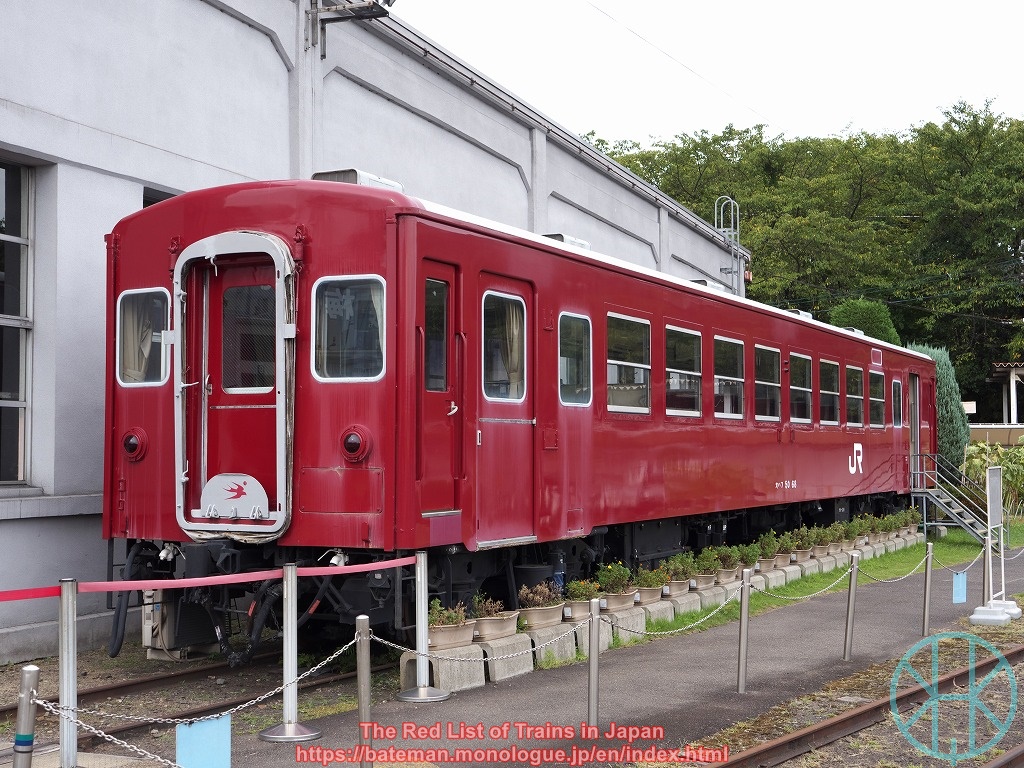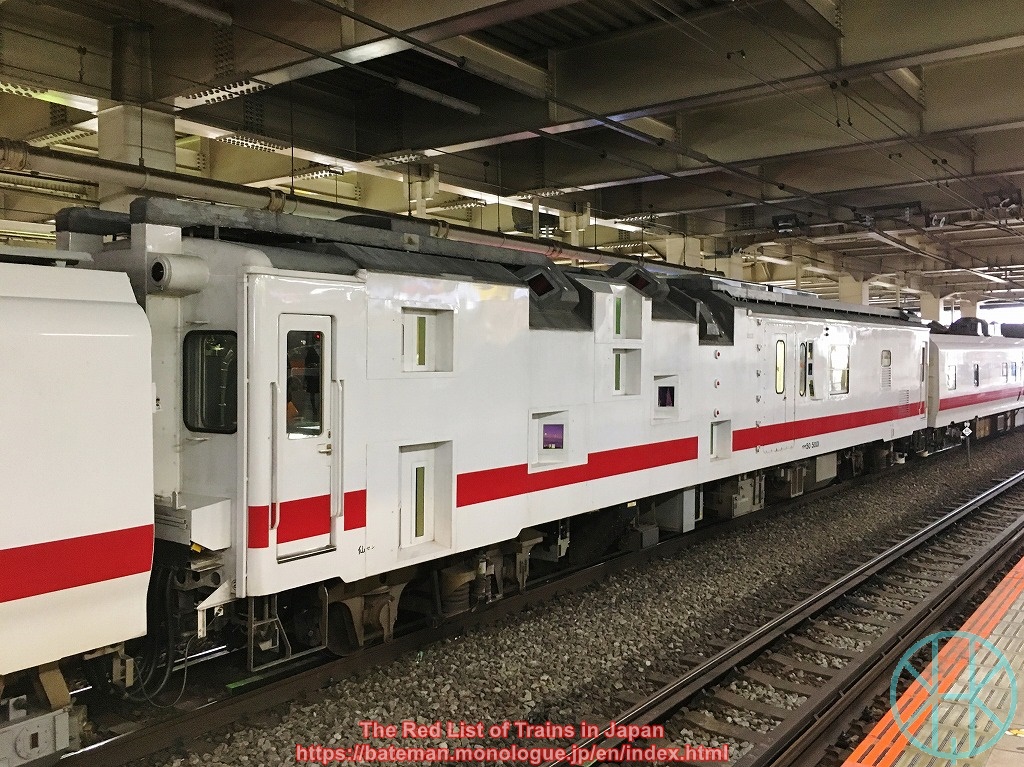JNR 50 series

Data (as of 31 Mar 2024)
| Status: | Critically Endangered |
| (JR West, JR Kyushu) | |
| Data Deficient | |
| (JR Hokkaido | |
| JR East,Tokyu, | |
| Moka Railway) | |
| Extinct | |
| (JR Shikoku) | |
| Constructed in: | 1977-82 |
| Number built: | 1,269* |
| Registered: | 16 |
*Including 80 coaches which were converted from older coaches initially for carrying parcels and mails.
History
50 series is a type of passenger carriage for regional services. Those for Hokkaido were sometimes called 51 series. Japanese National Railways developed the series to replace old coaching stock, many of which were built in the 1920s to the early-60s. JNR had implemented Modernisation Programme since 1960 and it had already decided to discontinue locomotive-hauled trains as they were slower and less efficient than electric or diesel multiple units, but JNR could not replace all old unsafe coaches at that time. Furthermore, trade unions strongly opposed replacing loco-hauled trains with EMUs or DMUs as workers would face redundancy. Hence, JNR had no other option but to introduce the 50 series as a stopgap. However, the series became one of the most unsuccessful train in Japanese railway history, as described below.
The 50 series had both longitudinal and transverse seating as JNR designed it both for commuters or students and passengers travelling long distance. Unlike old coaches for regional services at that time, the 50 series coaches had doors that open and close automatically, making the journey far safer than before. Those for Hokkaido (so-called the 51 series) had special features including small double-pane windows to cope with extremely cold winter. All coaches for passenger use were painted red, although some of them were later repainted.
The 50 series was first introduced to Chikuho Main Line as well as Geibi Line. More coaches were delivered to Joban Line in Sendai area and later across the country, and some services were formed of ten coaches. They were mostly in small or middle-size cities, but services in Sapporo and San-in Main Line trains in Kyoto were also provided by the 50 series. These trains were hauled by various locomotives including Class EF81 and Class DD51. However, as electric and diesel multiple units which were used for express services such as 457 series and KiHa 58 series became redundant, JNR decided to use them more than the 50 series. Since the mid-1980s, the 50 series had been used mostly formed of three to five coaches. Some trains even had two locomotives, which might have been easy to reverse the train, but clearly costly.
When JNR was privatised in 1987, the 50 series coaches were taken over by all but JR Central and JR Freight, but these companies had struggled with the new but inefficient coaching stock. Some of them were air-conditioned, and several coaches were converted to tourist trains that did not last long. A few of them were converted to diesel multiple units such as KiHa 141 series. However, the vast majority of them became redundant in as early as 1988, and up to over a hundred coaches were scrapped each year. JR West and Shikoku stopped using the 50 series by 1992, JR East did so by 1993, while JR Kyushu retained them until 2001. JR Hokkaido refurbished some coaches, made them compatible with Seikan Tunnel and used them for Rapid Kaikyo (Hakodate - Aomori) until 2002.
In addition, there were two types of coaches carrying parcels and mails: MaNi 50 and SuYuNi 50. MaNi 50 was brand new, while SuYuNi was converted from either 10 series or 43 series coaches, which dated back to the 1920s. They were initially painted blue. As JNR discontinued parcel and mail trains in 1986, most of them were disposed of (some MaNi 50 coaches were torn down in just four years). Some coaches were later reused for Car Train and Moto Train services, which were long-distance trains carrying both passengers and cars or motorcycles, but they were discontinued by the late-1990s.
Current Operations & Future Prospects
As there are only a few coaches remain and all of them are not for regular use, it is extremely difficult to figure out when they will retire.
JR Hokkaido has seven 51 series coaches and they are used for trains for tourists, namely Furano Biei Norokko (Asahikawa – Furano) and Kushiro Shitsugen Norokko (Kushiro – Touro). They have been dramatically refurbished, and have alternative cab that allow the train to be pushed by a locomotive behind. They are sometimes called 510 series.
JR Kyushu has three coaches which had been used for SL Hitoyoshi steam train with Class 8620. They are likely to remain for a while in 2024 but likely to retire soon.
Moka Railway uses three coaches along with Class C12 steam locomotive. It is highly likely that they are going to be the last 50 series for passenger train.
JR East has one, which was converted to a coach that checks a structure gauge. It is always sandwiched by either E491 or KiYa E193 series when working.
JR West has one at Shimonoseki Depot, which is supposed to be used in case of emergency. There are special equipment to deal with serious railway accident, but it has not moved for years. It is unlikely to see it running again.
Tokyu has one MaNi 50, which has a generator to allow electric multiple units to run unelectrified railways with a diesel locomotive. This coach was initially used by JR East until 2018. Tokyu bought it and has been using it in Hokkaido when Izukyu 2100 series runs as a special excursion train (HOKKAIDO CRUISE TRAIN) in summer.
Photo

The one owned by JR East, which is used as a part of the measurement train. There are many CCD image sensors to monitor the gauge structure.
(Updated: 31 Mar 2024)
